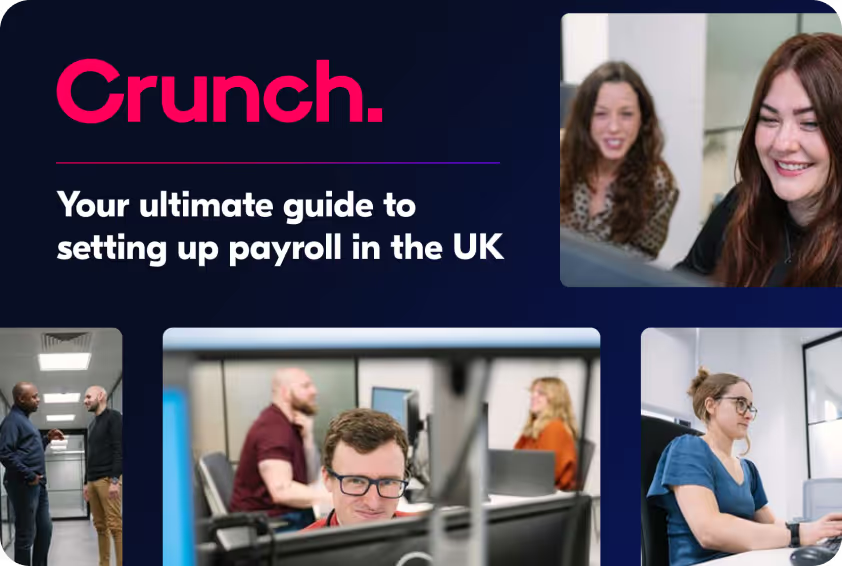If you've ever heard of the ‘40% tax bracket’ but are unsure about its implications and how it affects your income, you've come to the right place.
In today’s article, we'll explore the details of the 40% tax bracket in the UK, explaining what it means, who it applies to and how you can make smart financial decisions to minimise your tax bill.
Understanding the UK tax system
Before we discuss the specifics of the 40% tax bracket, it's important to understand how the UK tax system operates. In the UK, income tax is levied on individuals based on their annual income. The tax rates are divided into several bands, or tax brackets, each with its own corresponding tax rate. The current tax year is from 6 April 2025 to 5 April 2026.
In the UK tax system for 2025/26, for most people, you won’t be charged any tax on the first £12,570 you earn; this is your Personal Allowance (UK income tax personal allowance for 2025/26). Above that, for England, Wales, and Northern Ireland, there are three main tax brackets: the basic rate (20%), the higher rate (40%), and the additional rate (45%), as shown in the table below (Income Tax rates and bands for England, Wales, and Northern Ireland 2025/26):
It's important to note that your Personal Allowance may be smaller if your income is over £100,000. The Personal Allowance reduces by £1 for every £2 that your adjusted net income is above £100,000, meaning your allowance is zero if your income is £125,140 or above.
Additionally, taxpayers in Scotland have different income tax rates and bands for non-savings and non-dividend income (Scottish Income Tax rates for 2025/26).
Who does the 40% tax bracket apply to?
The 40% tax bracket, also known as the higher rate in England, Wales, and Northern Ireland, comes into play when an individual's income exceeds a certain threshold. For the tax year 2025/26, this threshold is set at £50,270 of taxable income.
If your income surpasses this amount, you will be subject to the 40% tax rate, but only on the portion of your income that exceeds the threshold.
Understanding marginal tax rates
It's essential to understand that the 40% tax rate is a marginal tax rate. This means that only the portion of your income that exceeds the higher rate threshold is taxed at 40%. Income earned within the lower tax brackets is taxed at their respective rates.
For instance, if your income is £60,000 in the 2025/26 tax year, and you are eligible for the standard Personal Allowance, the first £12,570 is tax-free. The income between £12,571 and £50,270 is taxed at 20%. Only the amount over the £50,270 threshold (i.e., £60,000 - £50,270 = £9,730) is subject to the 40% tax rate (how income tax is calculated).
The impact of the 40% tax bracket
As we’ve covered, the higher income tax rate does not apply to your entire income, but rather to the portion that exceeds the threshold. So while a 40% higher tax rate may initially seem daunting, it's important to consider the overall impact on your finances.
Individuals falling into the 40% tax bracket still benefit from the lower tax rates for their income up to the threshold. It's worth noting that the government does provide tax allowances and deductions which can further reduce the amount of income subject to the higher rate, lessening its impact. {{cta-limited-company}}
How to be tax efficient and reduce your higher rate income tax bill
For those approaching or already within the 40% tax bracket, it’s worth making yourself aware of the options that are available to you to reduce your tax bill. It might be worth considering:
- Tax-efficient savings and investments: Consider setting up an Individual Savings Account (ISA) or Lifetime ISA to reduce your taxable income and put more money into your savings, as you pay no Income Tax on the interest or dividends you receive from these savings accounts.
- Make use of tax allowances and deductions: Depending on your circumstances, you may be eligible for certain UK tax allowances, such as marriage allowance if you are married, or deductible expenses if you are self-employed, which can also reduce your taxable income.
- Pension contributions and employer schemes: Explore contributing to your pension, especially if your employer offers a matching contribution scheme. Not only does this help secure your financial future, it also reduces your taxable income. This is because pension contributions are free from income tax, which means that whenever you pay money into your pension you are refunded the income tax that you initially paid on that money.
- Explore salary sacrifice schemes: Some employers offer salary sacrifice schemes, allowing you to exchange part of your salary for non-taxable benefits like workplace nursery schemes or additional pension contributions, further reducing your taxable income. While childcare vouchers are closed to new entrants, workplace nursery schemes remain an option, and families might also explore the government's Tax-Free Childcare scheme (Tax-Free Childcare information).
- Claim tax relief on your charitable donations: As a higher rate taxpayer, you can claim the difference between the rate of tax you pay and the basic rate on any Gift Aid donation - meaning both you and the charity get more money each time you donate. To claim this tax relief, simply declare it on your tax return or ask HMRC to adjust your tax code. We’ll discuss how to do this in the next section.
*If you’re trying to work out your income tax, dividend tax, capital gains or any other kind of tax liability or rebate, then our tax calculators can make this quick and easy.
What is my tax code?
HMRC issues a tax code to everyone on the PAYE (pay as you earn) system. Your tax code is a simple series of numbers and letters which your employer and pension provider will use to work out which tax bracket you’re in, and how much income tax to take from your wages or pension. The emergency tax codes from 6 April 2025 are 1257L W1, 1257L M1, and 1257L X (emergency tax codes for 2025/26).
Whenever your salary changes, HMRC will adjust your tax code accordingly.
For example, if you have allowable expenses or deductions, you may have a tax code that increases your personal allowance. The 500L tax code is also one to be aware of, especially if you employ staff, as this typically denotes emergency tax, though specific emergency codes like 1257L are used for the 2025/26 tax year.
It’s important to ensure your tax code is accurate at any given time, so that you don’t end up overpaying or underpaying on income tax. You can find and check your tax code on your payslip, your P45 or your P60, and update it here on the government’s website.
Is the 40% tax bracket subject to change?
Yes. Tax rates are decided and announced each year by the government in their annual Budget, and have changed throughout the past few decades. For example, in the 1970s, the highest rate of income tax on earned income was 83%, before Margaret Thatcher's government reduced it to 60% in 1980 and then to 40% in 1989. For the 2025/26 tax year, 40% remains the higher income tax rate for England, Wales, and Northern Ireland (current higher tax rate information).
However, it’s worth noting that the UK’s current tax allowance and bands - including the 40% tax bracket for England, Wales, and Northern Ireland - are frozen until April 2028 (confirmation of tax threshold freeze). This means that as wages rise with inflation, more people may find themselves moving into higher tax brackets, a phenomenon known as fiscal drag (impact of frozen thresholds).
Final thoughts
Understanding UK tax rates for the current tax year - including the 40% tax bracket - is crucial for everyone living in the UK, and especially for individuals earning higher incomes. By understanding the concept of marginal tax rates, you can make informed financial decisions and save effectively for your future.
However, it's crucial to seek professional advice from a tax expert or financial adviser who can help with your specific circumstances. They can guide you through the intricacies of the tax system, ensuring that you maximise all available tax benefits and make decisions that improve your financial wellbeing.

.svg)



.webp)





.avif)






